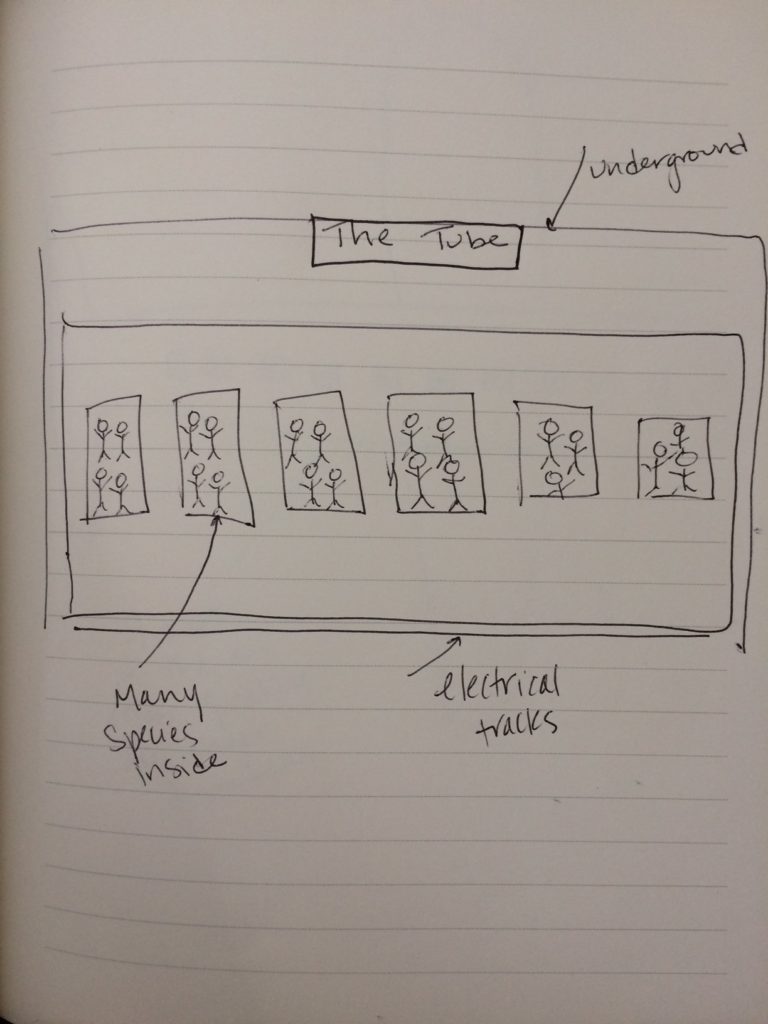Entry: Temporary Daily Stasis
At least once every 24-hour period the entirety of this species falls into a state of stasis (linguistic term: “sleep”). Stasis durations last approximately 6-9 hours. The average state of stasis occurs when the planet’s rotation faces away from its sun, leaving the hemisphere devoid of sunlight.
During these hours of darkness the species becomes, in their vernacular, “sleepy.” This sleepiness is indicated by languid body movements, a widening of the mouth with a sharp inhalation and slow exhalation of breath, and a drooping of the thin skin that blinks over the eye balls.
When in stasis, this species prefer to lie horizontally on a soft surface, incline their head on additional small squares filled with supple material, and cover their bodies with layers of fabric. Some species sleep alone, while others engage in co-sleeping.
While asleep, this species keep their eyes closed, frequently flip their bodies over, change positions, and fling out their limbs. Some emit loud snorting sounds from their mouths, or let saliva drip down over their cheeks. Others mumble or breath loudly, while some twitch and yell. It appears that mental activity is still occurring during physical periods of stasis, although it is hard to tell what, or whether it is coherent.
Observational sketches below detail some habits and positions observed during periods of stasis:





